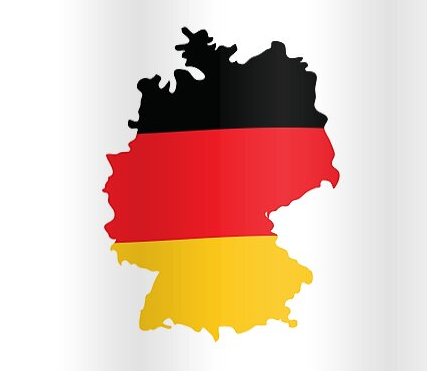Benin, a vibrant West African nation, boasts a rich cultural heritage that is beautifully reflected in the Benin National Color: yellow, red, and green. These color hold deep historical significance and symbolize the values, traditions, and aspirations of the Beninese people. In this article, we will explore the origins and symbolism of Benin’s national color, their cultural references, and their impact on various aspects of Beninese society.
Historical Significance of Benin National Color
The color yellow, red, and green have been an integral part of Benin’s history for centuries. They represent the resilience and strength of the Beninese people, who have overcome numerous challenges throughout their existence. These color can be traced back to the powerful Dahomey Kingdom, which flourished in present-day Benin from the 17th to the 19th century.
Symbolism of Yellow, Red, and Green
Yellow symbolizes the sun, signifying enlightenment, optimism, and prosperity. It represents the bright future that the Beninese people strive for. Red embodies the courage, resilience, and sacrifices made by the ancestors in defending their land and traditions. Green represents the fertile lands and agricultural wealth of Benin, signifying hope, growth, and abundance.
Cultural References
Benin’s national color are deeply ingrained in the cultural fabric of the nation. They are prominently featured in various cultural practices, such as traditional dances, rituals, and ceremonies. The color adorn the traditional attire worn during festivals and special occasions, adding vibrancy and splendor to the celebrations.
Benin’s National Flag
The national flag of Benin, adopted on November 16, 1959, proudly showcases the color yellow, red, and green. The vertical stripes of yellow, red, and green, from left to right, symbolize the sun, the courage of the ancestors, and the lush vegetation, respectively. The flag serves as a powerful emblem of Benin’s sovereignty and national identity.
Use of Color in Benin’s Culture
Beyond the national flag, yellow, red, and green find their way into various aspects of Benin’s culture. From traditional artworks to pottery, jewelry, and masks, these color are prevalent, reflecting the artistic prowess and creativity of the Beninese people. The vibrant hues infuse life and energy into the country’s cultural heritage.
Impact of Color on Benin’s Identity
Color play a significant role in shaping the identity of a nation. In the case of Benin, yellow, red, and green foster a sense of unity and pride among the population. These color serve as a unifying force, reminding the Beninese people of their shared history, values, and aspirations. They reinforce a collective identity that transcends regional and ethnic boundaries.
Influence of Benin National Color in Beninese Art
Beninese art is renowned for its intricate designs and vibrant color. The color yellow, red, and green hold a special place in the realm of Beninese artistic expression. Artists and artisans skillfully incorporate these color into their paintings, sculptures, and crafts, creating visually stunning pieces that captivate the viewer’s imagination.
The color yellow often represents the sun and the warmth it brings. It is used to depict joy, enlightenment, and positivity in Beninese art. Artists skillfully utilize different shades and tones of yellow to convey various emotions and themes. From depicting the golden rays of the sun to symbolizing the illumination of knowledge and wisdom, yellow adds a touch of radiance and optimism to Beninese artworks.
Red, on the other hand, holds powerful symbolism in Beninese art. It represents strength, courage, and the spirit of the ancestors. Artists use shades of red to depict the vitality and determination of the Beninese people throughout history. From fiery reds to deep maroons, the color evokes a sense of passion and resilience, embodying the struggles and triumphs of the nation.
Green, synonymous with lush vegetation and fertile lands, finds its way into Beninese art as well. It symbolizes growth, abundance, and the agricultural wealth of the country. Artists incorporate various shades of green, from vibrant emeralds to earthy hues, to portray the bountiful nature of Benin. Green serves as a reminder of the country’s agricultural roots and its deep connection to the land.
Yellow, Red, and Green in Traditional Attire
Traditional attire in Benin is a vivid display of cultural heritage and pride. The color yellow, red, and green feature prominently in the fabrics and designs worn by the Beninese people. Traditional garments, such as the brightly colored wrappers and headscarves, showcase the vibrancy and diversity of these color.
Yellow fabrics often symbolize celebrations, joyous occasions, and special ceremonies. They are worn during festivals, weddings, and important cultural events. The radiant yellow hues exude a sense of happiness and festivity, creating a captivating visual spectacle.
Red fabrics hold significant cultural and religious symbolism. They are commonly worn during ceremonies honoring ancestors, ancestral rites, and spiritual gatherings. The color red evokes a strong sense of spirituality, power, and connection to the divine. It is a testament to the rich cultural heritage and the deep reverence for ancestral traditions in Benin.
Green fabrics represent the natural beauty of the land, the fertility of the soil, and the agricultural abundance. They are worn during agricultural festivals and ceremonies, paying homage to the vital role of farming and the importance of sustenance. Green fabrics embody the harmony between the Beninese people and their environment, celebrating the interconnectedness of nature and human life.
Benin National Color in Festivals and Celebrations
Benin is renowned for its vibrant festivals and celebrations, and the national color play a significant role in these events. Festivals provide a platform for communities to come together, express their cultural heritage, and celebrate their shared identity.
During festivals like the Vodoun Festival, which is one of the largest and most colorful in Benin, the streets come alive with a riot of yellow, red, and green. Participants dress in traditional attire adorned with these color, dance to traditional rhythms, and engage in various cultural activities. The color serve as a visual representation of the festival’s theme and the cultural significance it holds.
Conclusion
Yellow, red, and green hold immense cultural significance in Benin, representing the country’s rich history, values, and aspirations. From their origins in the Dahomey Kingdom to their prominence in various aspects of Beninese culture, these color embody the spirit of the nation.
In conclusion, the national color of Benin, yellow, red, and green, are not just color but symbols of a nation’s history, culture, and aspirations. They represent the past, present, and future of a resilient and vibrant people who take great pride in their heritage. Embracing these color means embracing the essence of Benin itself.
FAQs
1. What is the significance of the national color of Benin?
The national color of Benin, yellow, red, and green, hold deep historical and cultural significance. They represent enlightenment, courage, and abundance, reflecting the values and aspirations of the Beninese people.
2. How are the national color incorporated into Beninese cuisine?
Beninese cuisine often features ingredients that showcase the vibrant hues of yellow, red, and green. Dishes like “Rouge” and “Avocado Salad” utilize red tomatoes, peppers, and green avocados, adding color and flavor to traditional meals.
3. Are the national color of Benin used in branding and marketing?
Yes, the national color are often incorporated into branding and marketing materials in Benin. Local businesses and the tourism industry utilize yellow, red, and green to create a visual connection with the culture and identity of the country.
4. What role do the national color play in Beninese festivals?
During festivals in Benin, the national color are prominently featured in costumes, decorations, and rituals. They add vibrancy and symbolism, enhancing the festive atmosphere and celebrating the cultural heritage of the nation.
5. How do the national color contribute to the tourism experience in Benin?
The color yellow, red, and green enhance the tourism experience in Benin by representing the country’s cultural authenticity, natural beauty, and vibrant traditions. They guide travelers through a journey of discovery, immersing them in the essence of Benin’s heritage.
References
- Assogba, G. (2018). Vodun Arts in Benin: From Origins to Globalization. Indiana University Press.
- Lawal, B. (2011). Benin Kings and Rituals: Court Arts from Nigeria. The Metropolitan Museum of Art.
- Morton, F. (2016). Colour as a Vital Sign: The Symbolism of Red, White, and Black in the Royal Arts of Benin. The Journal of the Royal Anthropological Institute, 22(2), 360-377.

